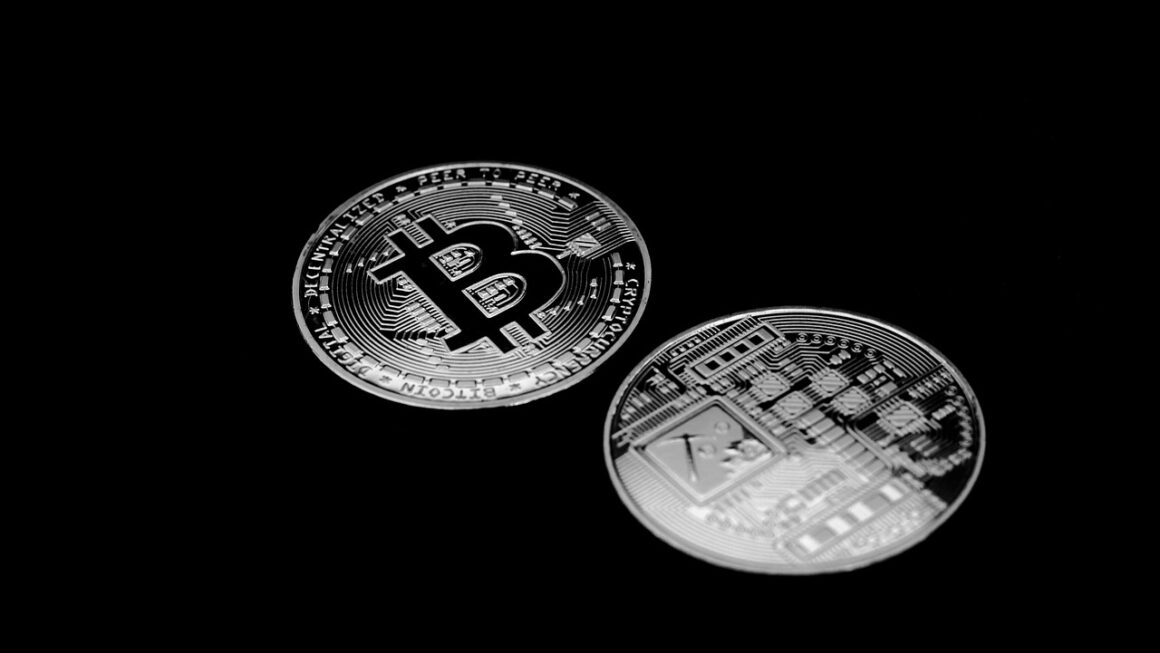Solana has emerged as a significant player in the blockchain world, capturing attention with its innovative approach to speed, scalability, and cost-effectiveness. Often touted as a potential “Ethereum killer,” Solana’s architecture allows for transactions to be processed at blazing speeds and at significantly lower costs compared to some of its competitors. But what exactly is Solana, and why is it gaining so much traction? This comprehensive guide dives deep into the Solana blockchain, exploring its technology, ecosystem, and potential.
What is Solana?
Solana’s Core Technology
Solana is a high-performance, open-source blockchain designed for decentralized applications (dApps) and cryptocurrencies. It addresses the blockchain trilemma (scalability, security, and decentralization) by employing a novel combination of proof-of-history (PoH) and proof-of-stake (PoS) consensus mechanisms. Unlike blockchains that process transactions sequentially, Solana uses PoH to create a historical record that proves the order of events, greatly improving transaction throughput.
- Proof-of-History (PoH): This is Solana’s core innovation. PoH acts like a cryptographically secure clock, allowing nodes to agree on the time and order of transactions without constantly communicating with each other. This dramatically speeds up the process.
- Proof-of-Stake (PoS): Solana also utilizes PoS to select validators who are responsible for confirming transactions and securing the network. This method is more energy-efficient than proof-of-work (PoW), which is used by Bitcoin.
Key Features and Benefits
- High Throughput: Solana boasts an incredibly high transaction throughput, theoretically capable of handling up to 50,000 transactions per second (TPS). In practice, it handles around 3,000 – 4,000 TPS. This makes it suitable for applications requiring fast and frequent transactions.
- Low Transaction Fees: Solana’s low fees are a major draw for developers and users alike. Transactions typically cost fractions of a cent, making it an attractive alternative to blockchains with high gas fees. For example, a typical transaction might cost less than $0.001.
- Scalability: The combination of PoH and PoS enables Solana to scale effectively, handling increasing transaction volumes without compromising speed or security.
- Developer-Friendly: Solana supports Rust programming language, which is known for its safety and performance. This, coupled with comprehensive developer tools, makes it easier for developers to build and deploy dApps.
- Ecosystem Growth: Solana’s ecosystem is rapidly expanding, with a growing number of DeFi projects, NFT marketplaces, and other applications.
The Solana Ecosystem
Decentralized Finance (DeFi) on Solana
Solana’s high throughput and low fees make it an ideal platform for DeFi applications. Numerous DeFi projects have launched on Solana, offering services such as:
- Decentralized Exchanges (DEXs): Raydium and Orca are popular DEXs on Solana, enabling users to trade tokens directly without intermediaries. These DEXs offer fast execution speeds and low slippage.
- Lending and Borrowing Platforms: Solend and Mango Markets allow users to lend and borrow crypto assets, earning interest or taking out loans.
- Yield Farming: Several platforms offer yield farming opportunities, allowing users to earn rewards by providing liquidity to various pools.
Non-Fungible Tokens (NFTs) on Solana
Solana has become a popular platform for NFTs, offering faster minting and trading compared to other blockchains. The low fees also make it more accessible for artists and collectors.
- NFT Marketplaces: Magic Eden is a leading NFT marketplace on Solana, featuring a wide variety of collections and a user-friendly interface. Other platforms like Solanart also see significant NFT traffic.
- Gaming NFTs: Solana is increasingly being used for blockchain gaming, with projects integrating NFTs for in-game assets and rewards.
Infrastructure and Tools
Solana has a robust ecosystem of infrastructure and tools that support its development and growth.
- Wallets: Phantom and Solflare are popular Solana wallets that allow users to store, send, and receive SOL tokens and other Solana-based assets.
- Development Tools: Solana provides a comprehensive suite of development tools, including SDKs, APIs, and libraries, to help developers build and deploy dApps.
- Explorers: Solana Beach and Solscan are block explorers that allow users to track transactions, view account balances, and analyze network activity.
Solana vs. Ethereum
Key Differences
Solana is often compared to Ethereum, the leading blockchain platform for dApps. While both platforms aim to support a decentralized future, they differ significantly in their approach and technology.
- Consensus Mechanism: Ethereum primarily uses Proof-of-Work (PoW), though it is transitioning to Proof-of-Stake (PoS), while Solana utilizes a hybrid approach of Proof-of-History (PoH) and Proof-of-Stake (PoS).
- Transaction Throughput: Solana boasts significantly higher transaction throughput than Ethereum, especially before Ethereum’s full transition to PoS.
- Transaction Fees: Solana’s transaction fees are significantly lower than Ethereum’s, making it more accessible for smaller transactions and applications.
- Programming Languages: Ethereum primarily uses Solidity, while Solana uses Rust.
Advantages and Disadvantages
| Feature | Solana | Ethereum |
|—————–|———————————————|———————————————|
| Throughput | Very High (3,000 – 4,000 TPS) | Lower (currently ~15 TPS, post-merge higher) |
| Transaction Fees | Very Low | Higher |
| Scalability | High | Improving with upgrades |
| Ecosystem | Growing rapidly, but smaller than Ethereum | Largest and most established |
| Security | Relatively newer, still being battle-tested | More mature and battle-tested |
Investing in Solana (SOL)
Understanding SOL
SOL is the native cryptocurrency of the Solana blockchain. It is used for:
- Transaction Fees: Paying for transactions on the Solana network.
- Staking: Participating in the PoS consensus mechanism and earning rewards.
- Governance: Potentially participating in the governance of the Solana network in the future.
How to Buy SOL
- Cryptocurrency Exchanges: SOL can be purchased on major cryptocurrency exchanges like Binance, Coinbase, Kraken, and others.
- Decentralized Exchanges (DEXs): SOL can also be traded on DEXs like Raydium and Orca within the Solana ecosystem.
Risks and Considerations
Investing in SOL, like any cryptocurrency, carries risks:
- Volatility: Cryptocurrency prices can be highly volatile and subject to rapid fluctuations.
- Market Risk: General market conditions and investor sentiment can impact the price of SOL.
- Technology Risk: Solana is a relatively new technology, and there is always the risk of unforeseen technical issues or vulnerabilities.
- Regulatory Risk: Cryptocurrency regulations are still evolving and may impact the value or use of SOL.
It is essential to conduct thorough research and understand the risks before investing in SOL or any cryptocurrency.
The Future of Solana
Potential Developments
Solana’s future looks promising, with several potential developments on the horizon:
- Network Upgrades: Ongoing efforts to improve network performance, security, and scalability.
- Ecosystem Growth: Continued expansion of the Solana ecosystem with new dApps, DeFi projects, and NFT marketplaces.
- Institutional Adoption: Increased interest from institutional investors could drive further growth and adoption of Solana.
- Cross-Chain Interoperability: Potential integrations with other blockchains to enable seamless transfer of assets and data.
Challenges and Opportunities
Solana faces several challenges and opportunities as it continues to evolve.
- Competition: Competition from other blockchain platforms, such as Ethereum, Avalanche, and Cardano.
- Security: Maintaining the security and stability of the network as it grows.
- Decentralization: Ensuring that the network remains sufficiently decentralized as it scales.
- Adoption: Driving further adoption of Solana by developers, users, and institutions.
Despite these challenges, Solana’s innovative technology, strong community, and growing ecosystem position it well for future success.
Conclusion
Solana represents a significant advancement in blockchain technology, offering high throughput, low fees, and a rapidly expanding ecosystem. While it faces competition and challenges, its innovative approach and growing adoption make it a compelling platform for decentralized applications and cryptocurrencies. Whether you’re a developer, investor, or simply curious about the future of blockchain, Solana is undoubtedly a project worth watching closely. Its ability to handle high transaction volumes at low cost could potentially revolutionize various industries and pave the way for a more decentralized future.




